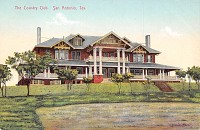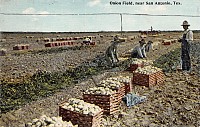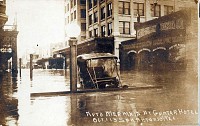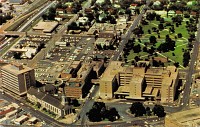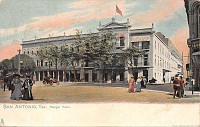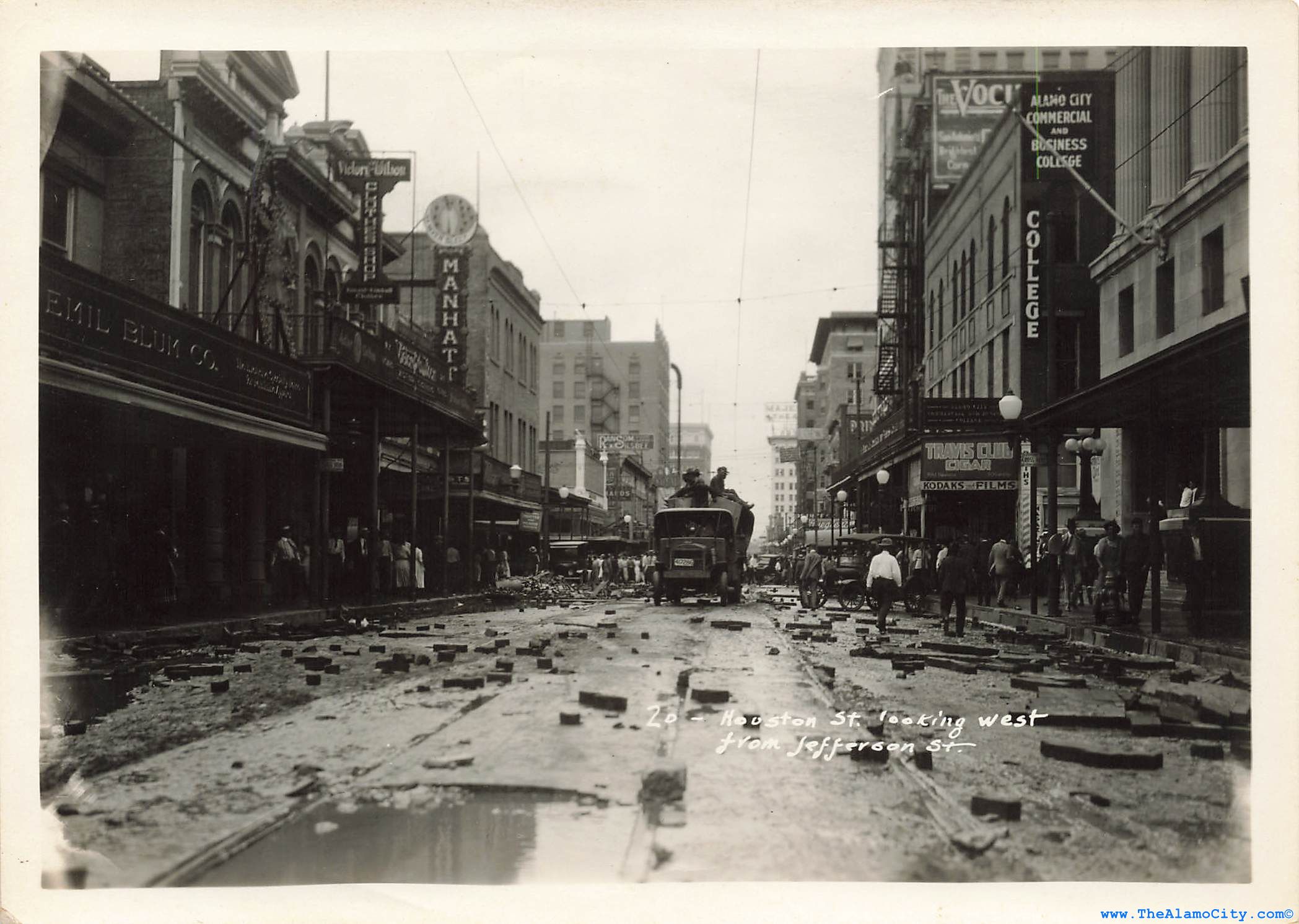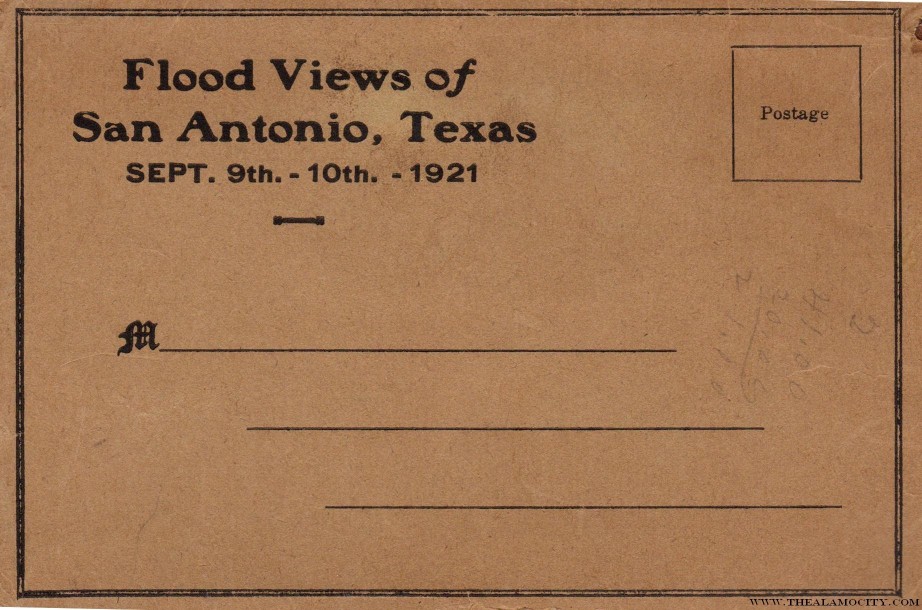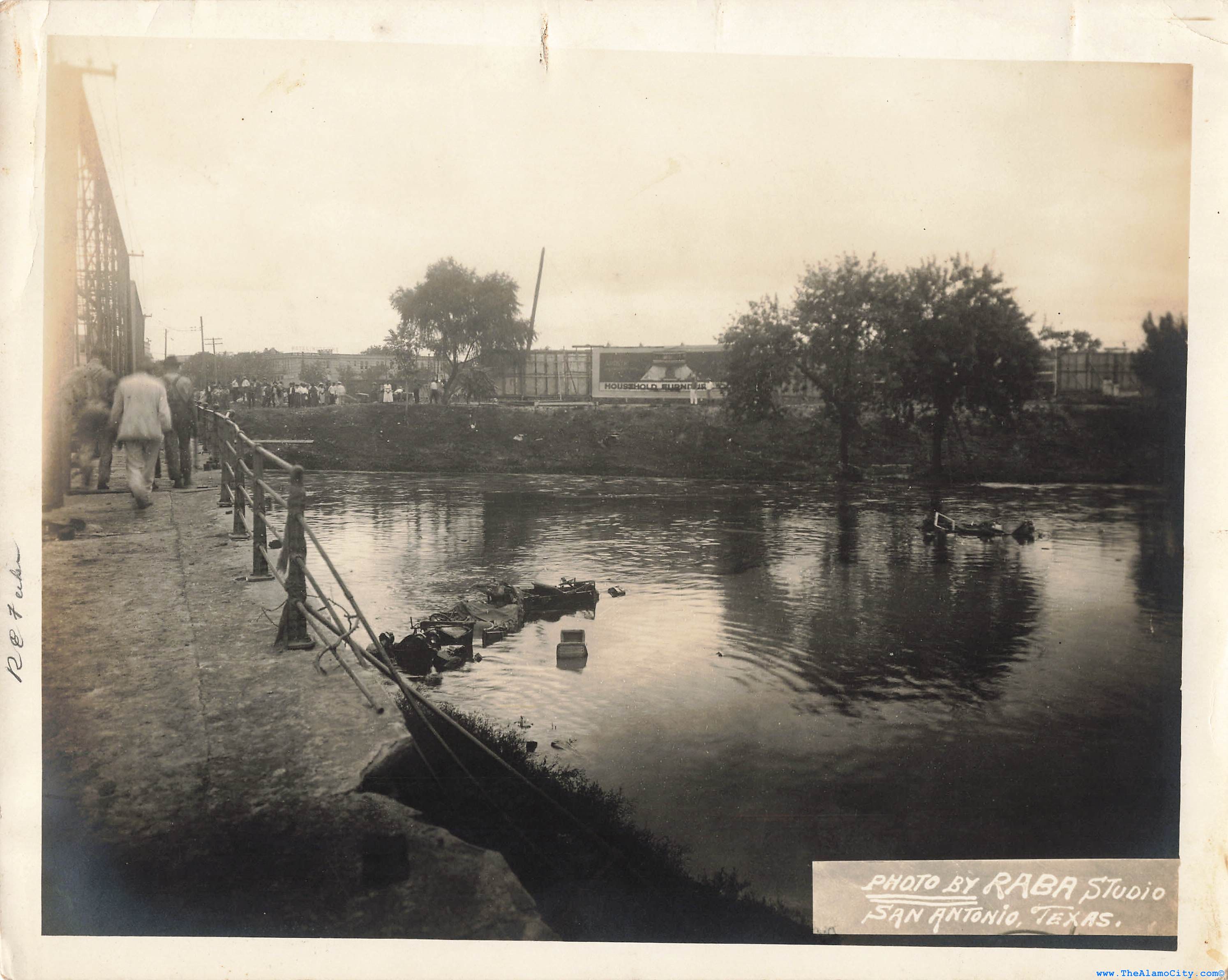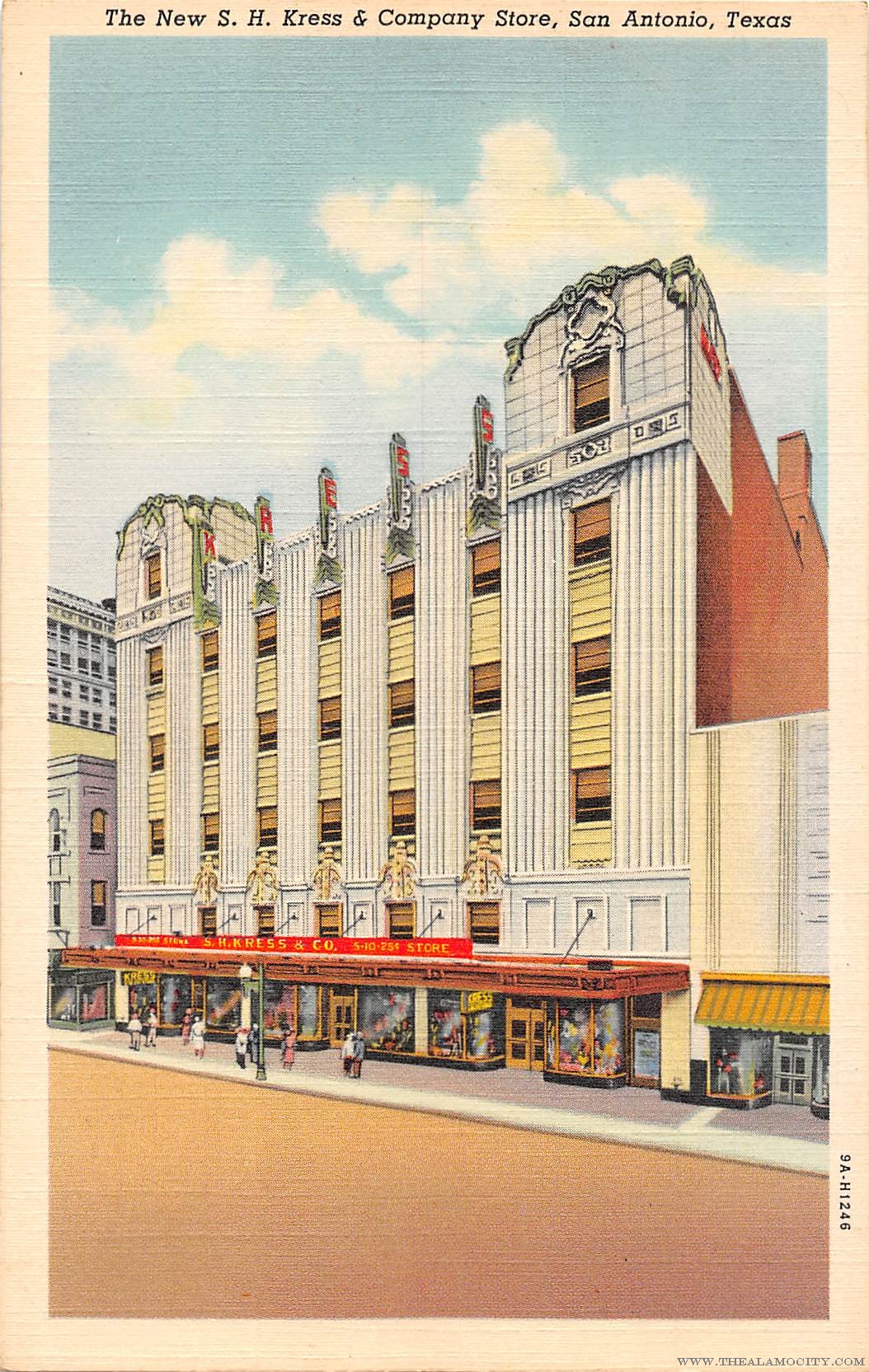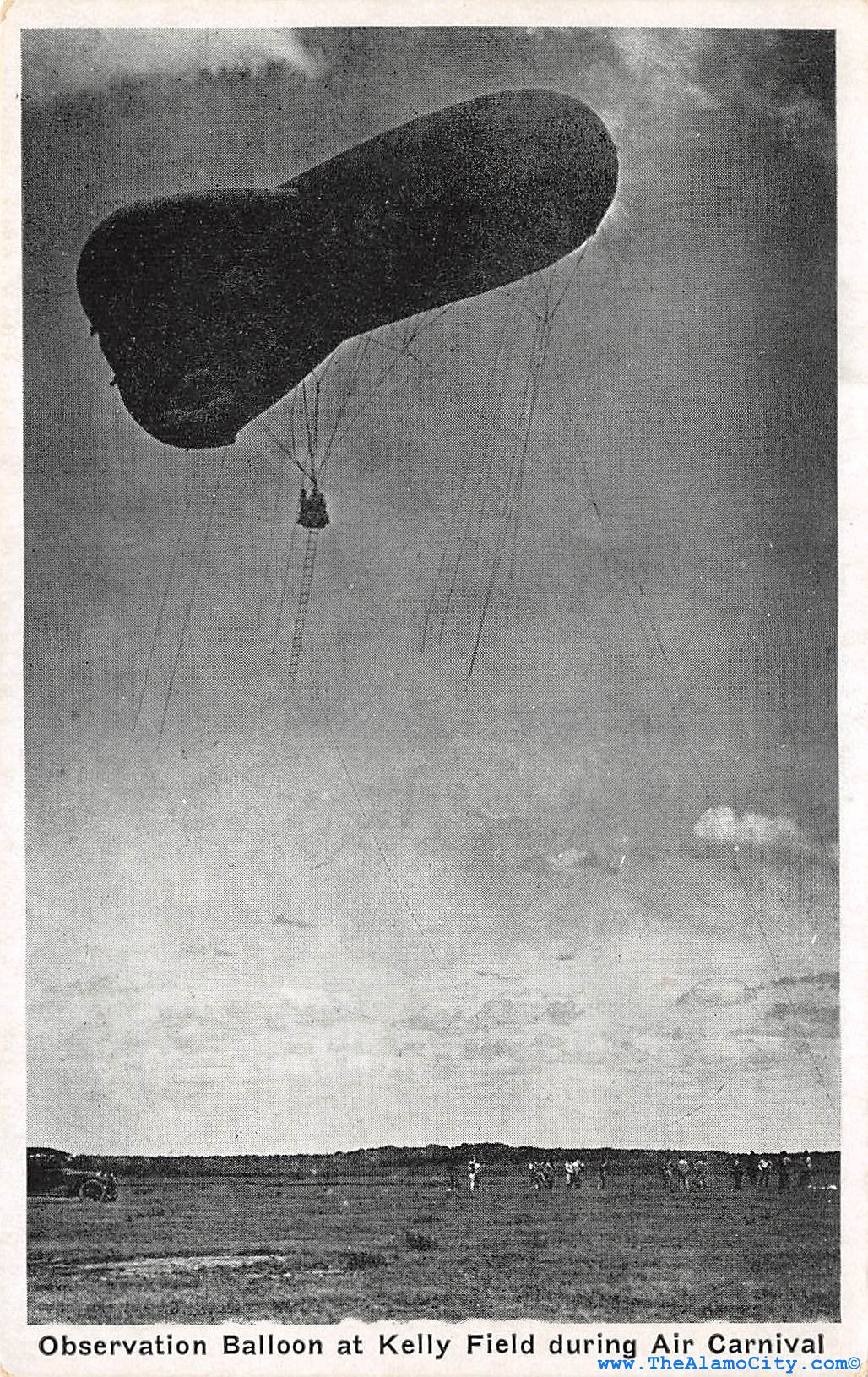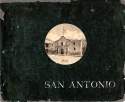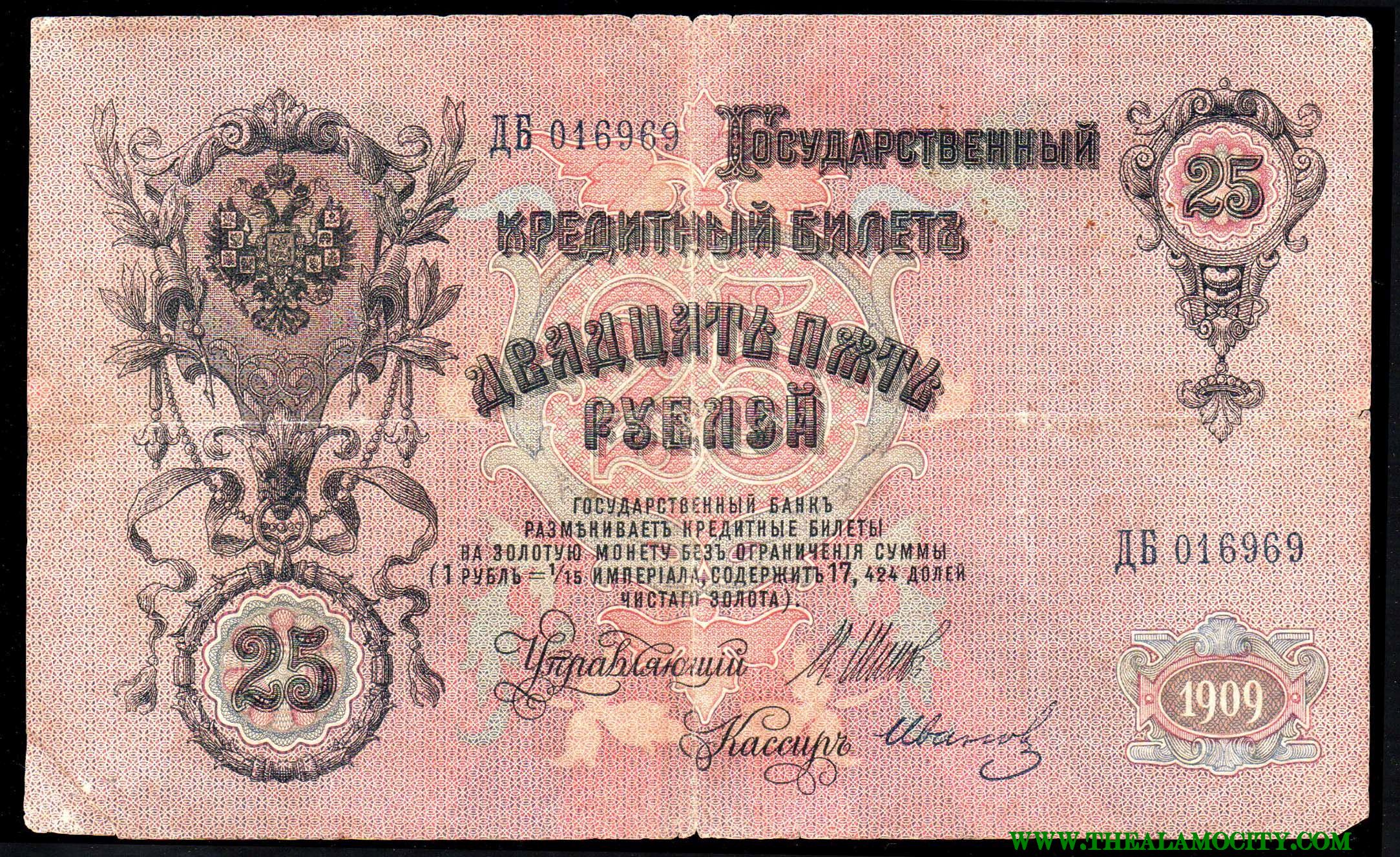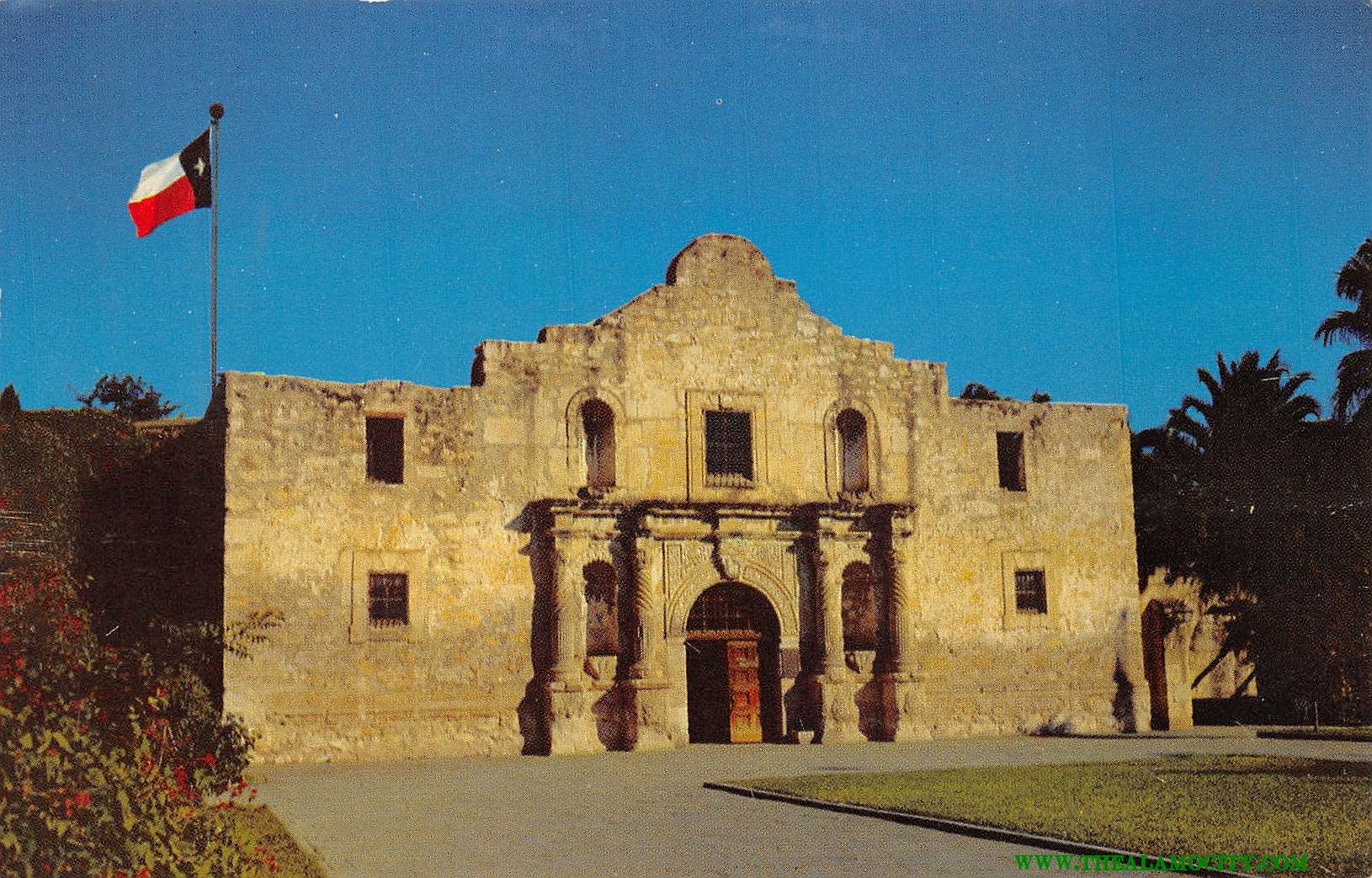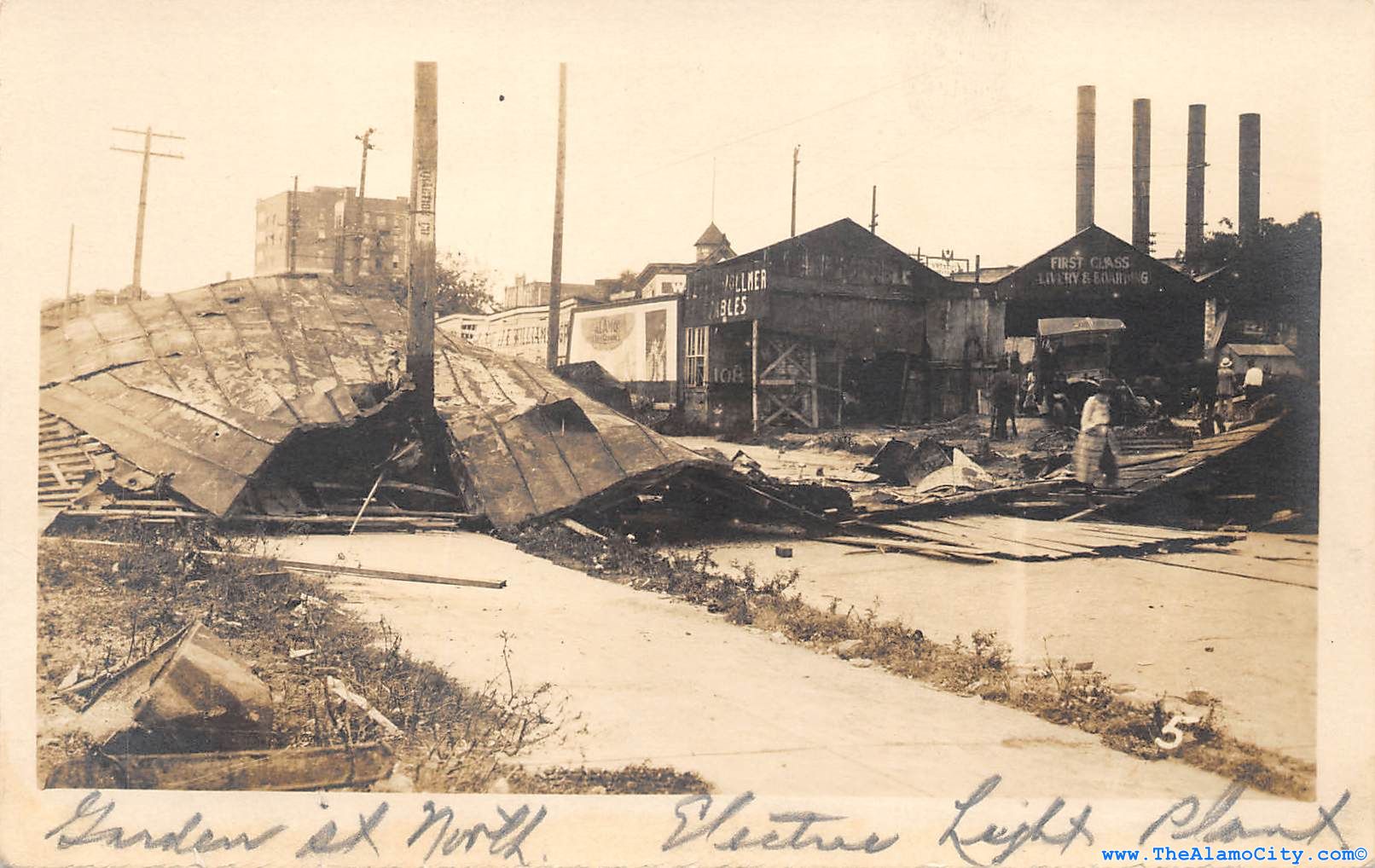On Oct. 1, 1913, 3.30 inches of rain fell in San Antonio. As the water flowed downriver, the flooding got worse. Four people died, and damage was estimated at $250,000 (almost $6 million in today’s dollars). Businesses and homes flooded, bridges went out, streetcars and their lines were damaged and residents were rescued.
A story on Oct. 3 reported that Mayor Clinton Brown was considering the “Olmos Plan,” where a dam would be built “beyond Brackenridge Park in the Olmos watershed north of the city.” It wasn’t until after the 1921 flood when that plan became a reality.
In 1921 the rain returned and caused the deadliest and most destructive flood in San Antonio history swallowing the streets of downtown. Along with $5 million in damage, the flash flood that barreled through San Antonio caused 51 deaths locally. The flood began on Sept. 7, 1921, after remnants from a hurricane traveled to Williamson County, mainly the towns of Taylor and Thrill, and dropped 23.11 inches of rain in less than a day.
Rainfall then traveled south towards San Antonio, causing the Olmos Creek to reach its crest in just one hour. Hundreds of homes near Brackenridge Park were inundated by water depths varying from a few inches to 8- and 10-feet high. Downtown, the streets were flooded by 1-to-12 feet of rain by the end of the day.
The flood, which caused 215 fatalities across Central Texas, introduced a 10-year overhaul of flood control measures and river improvements to San Antonio. As a result, the Olmos Dam was built just north of San Antonio for $1.5 million.
Much rarer is snow in San Antonio. In 1898 San Antonio experienced it's 10th heaviest recorded snowfall of 2.7"!


